Dipping a Toe into Buddhist Chaplaincy Training:
Being Present, Listening, and Serving
Written by: Kate Davies
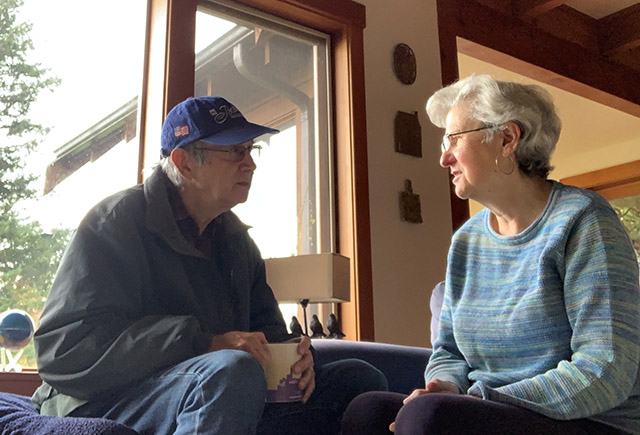
Kate Davies offering spiritual support to George DuWors in November, 2021.
Photos by: Permission of Jennifer Block, Kate Davies, Permission of Gil Fronsdal, Permission of Paul Haller
I have been curious about chaplaincy ever since I received some much-needed spiritual support from a Christian chaplain, after my ex-husband died in 1997.
Even though I did not identify with her religion, she helped me and my 8-year-old son through a dark time in our lives. She spent hours with us, listening deeply and responding with much wisdom and kindness. She also provided me with practical assistance: looking after my son so I could have some time to myself, running interference with the neighbors when I couldn’t face them, and going grocery shopping for us.
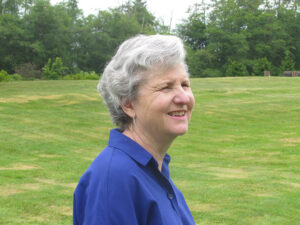
Davies has become more comfortable supporting people in distress, due to the chaplaincy program.
Fast forward to 2020, when I had been leading the Whidbey Island Insight Meditation Group for two years. Initially established in 2018 for a year-long practicum project I needed to complete the two-year Mindfulness Meditation Teacher Certification Program, the group decided it wanted to keep meeting. So we did.
Originally we gathered at Healing Circles Langley, a nonprofit in Langley that provides space for people offering different healing modalities, but since March 2020 we have been meeting on Zoom because of COVID. Since moving online the group has grown to about 15-25 regulars, of which about half live on Whidbey Island and half elsewhere in the U.S. or in other countries.
Now we’re in our fourth year, meeting weekly on Thursdays at 5 p.m. for meditation, a short talk, (from me) and what we call “practice sharing.”
In the late spring and summer of 2020, with Covid fears widespread, I decided to offer an additional weekly session focused on using Buddhist practices to cope with the unfolding pandemic. However as people spoke about their anxieties I began to feel inadequate and overwhelmed, by all the fear and distress that was being expressed.
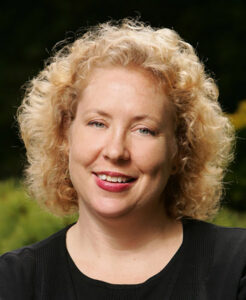
Jennifer Block, an interfaith minister and longtime Buddhist chaplain, was a co-leader of the program.
Then, in August 2020, I noticed that the Sati Center for Buddhist Studies was offering its 2020/21 introductory Buddhist Chaplaincy Program online. I applied immediately.
Within a few weeks I had an “interview” with Jennifer Block, one of the faculty and a Buddhist chaplain who has practiced in the Zen and insight traditions. I put interview in quotes because she didn’t ask me many questions. Rather, we talked about chaplaincy and the program in a very informal way, which put me at ease immediately.
Soon after, in September 2020, we had our first online class. There were about 30 of us from all over the U.S., with a few from Canada and other countries. Our ages varied from the mid-20s to the mid-70s and maybe 30 percent identified as “Black, Indigenous, People of Color.”
Block and the other faculty – Gil Fronsdal (Zen and Insight), Paul Haller (Zen), and assistant Vanessa Able (Zen) – explained that the program is structured around the 10 paramis (perfections), and we would focus on one monthly during our all-day classes.
The teachers also explained the somewhat-daunting reading requirements, the service work, (which most people did online), and the numerous but thought-provoking written assignments. These included monthly dharma reflection papers on a short Buddhist story, four “action reflection papers,” a paper on our personal religious history, and toward the end of the program, one on our “applied dharmology.”

Gil Fronsdal, founder of Insight Meditation Center in Redwood City, California, also taught in the program.
While all of these written assignments stretched me and made me think about how to offer spiritual care Buddhist style, my favorite was the applied dharmology paper. This was because it asked us to articulate our understanding of Buddhist chaplaincy, and to describe how we intended to apply it in our lives. Not easy, but well worthwhile!
In addition to this individual work, the program has a strong commitment to collaborative learning. Our monthly online classes included a lot of discussion time, and we were also put into small groups that met monthly. These included a group of eight with one of the faculty, a peer group of four, and a dyad with a “dharma buddy.” In addition we met individually with one of the faculty every two months.
As someone who values individual and collaborative learning, this blended pedagogy offered the best of both.
Over the 11-month program I learned a lot about chaplaincy and spiritual care. Key topics included deep listening, spiritual assessment, ethics, and end-of-life care. But we weren’t simply learning about concepts and ideas; we also practiced together.
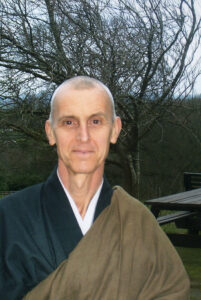
Paul Haller, former abbot of San Francisco Zen Center, was one of the chaplaincy program teachers.
For example, a discussion about prayer was followed by a role-playing exercise in which one person talked about a difficulty in their life, while another playing the role of the chaplain, offered an extemporaneous prayer in response. We were also encouraged to try out specific tools and techniques in our service work, when appropriate. This combination of theory and practice was very helpful.
As a result of this program, I feel much more comfortable being with people in distress. I don’t feel quite so inadequate and inept as I did, mostly because I learned that the most important thing I can do to is to simply listen deeply and then respond from my heart without any agenda.
Chaplaincy is not about fixing people or even helping people; it is about serving them. As Rachel Naomi Remen said, in an article in “Shambhala Sun,” “When you help, you see life as weak. When you fix, you see life as broken. When you serve, you see life as whole.”
I realized that when I am in a chaplaincy role I don’t have to say something wise or clever, I don’t have to pretend to be someone I’m not, and I don’t have to make it all better. All I need to do is to be fully present with a loving and open heart.
As Thich Nhat Hanh said, “The most precious gift you can give another is the gift of your presence.”
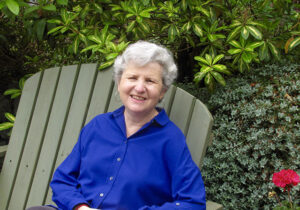
Kate Davies also leads the Whidbey Island Insight Meditation Group.
Chaplains listen and then respond appropriately. This may mean not saying anything at all, offering a hug, expressing compassion, praying, giving encouragement, baby-sitting, shopping for groceries, and other acts of service.
Looking back, I am very grateful to the wonderful faculty who not only taught me through their words but also through their example. They were unfailingly kind, patient, encouraging, supportive, and above all completely present as whole human beings. I am also grateful to my peers in the program. Any chaplaincy skills I have developed are a result of learning from them and with them.
Some of the 2020/21 class are going on to professional chaplaincy training but many, like me, are not. You don’t have to be a certified chaplain to offer spiritual care; anyone can do it. All it takes is a desire to be of service. And although I still feel inadequate and inept at times, I know that I am a better person than I was before COVID.
Kate Davies leads the Whidbey Island Insight Meditation Group. She is also a regular guest teacher at the Bellingham Insight Meditation Society and leads a mentored practice group there. She is a mentor for the Mindfulness Meditation Teacher Certification Program and the Power of Awareness, an online course on mindfulness meditation. She graduated from the Sati Center’s Buddhist Chaplaincy Program in July 2021.
